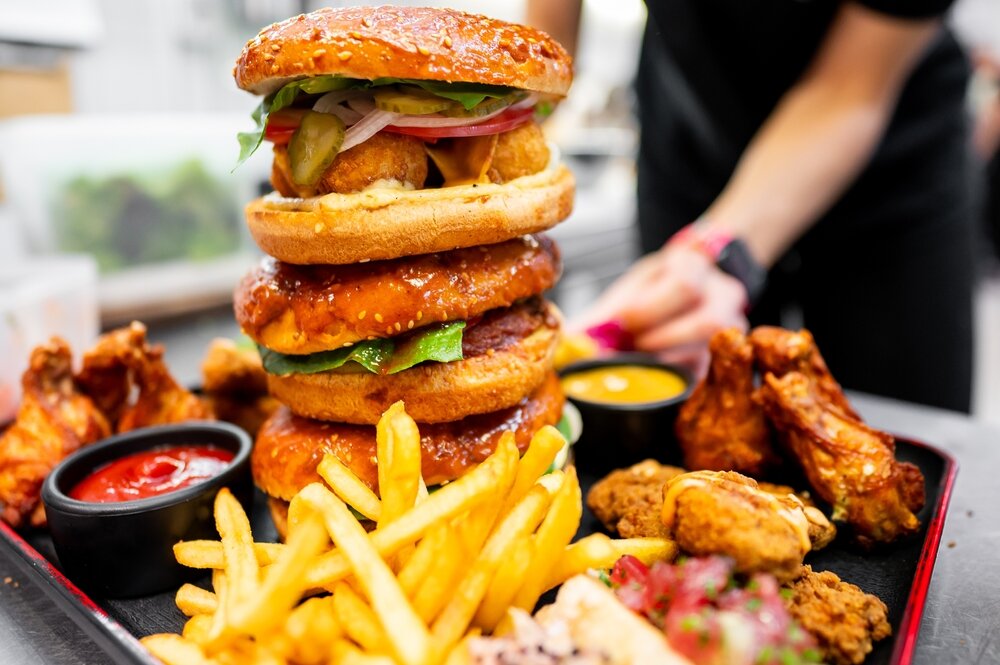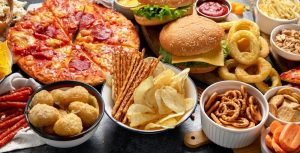Junk Food That Begins With You: An In-Depth Look at Unhealthy Treats
alternative. Guacamole and salsa provide healthy fats, fiber, and vitamins, making this a more nutritious option without sacrificing flavor.
- Instead of fried plantains: Opt for baked plantains or air-fried plantains. These methods reduce the amount of oil and calories while still delivering the delicious taste and texture of plantains.
- Instead of a Unicorn Frappuccino: Go for a homemade fruit smoothie. Blend fruits like berries, bananas, and spinach with almond milk or yogurt. This gives you a refreshing, naturally sweet drink full of fiber and antioxidants, without the excess sugar.
- Instead of an Ultimate Cheeseburger: Make a lean turkey or veggie burger at home, topped with fresh vegetables, avocado, and a whole grain bun. This reduces the saturated fat and sodium while increasing the nutritional value.
- Instead of Ube Ice Cream: Try ube itself, prepared with less sugar, or make a frozen yogurt version that has less fat and sugar but retains the same rich flavor.
By making these simple swaps, you can still enjoy delicious foods without compromising your health.
The Psychology of Junk Food and How to Break the Cycle
Understanding the psychology behind junk food cravings can help you break the cycle of unhealthy eating. Here are a few strategies that can help:
1. Mindful Eating
Mindful eating is the practice of being fully aware of the eating process—paying attention to the taste, texture, and feelings of hunger and satisfaction. When you eat mindfully, you’re more likely to recognize when you’re full and less likely to overeat, especially junk food.
2. Plan Your Meals
Planning your meals in advance can prevent impulse snacking on junk food. By preparing healthy snacks and meals ahead of time, you’ll be less tempted to reach for unhealthy options when you’re hungry.
3. Address Emotional Eating
Many people turn to junk food when they’re stressed, anxious, or bored. If this sounds familiar, try to identify the emotions driving your cravings and find healthier ways to cope, such as exercise, meditation, or engaging in a hobby.
4. Gradually Reduce Junk Food
Instead of quitting junk food cold turkey, which can lead to intense cravings, try reducing it gradually. Start by cutting back on portion sizes or limiting your junk food intake to specific days. This helps ease the transition to healthier eating habits.
5. Stay Hydrated
Thirst is often mistaken for hunger, leading to unnecessary snacking. Drink water throughout the day to stay hydrated and reduce cravings for sugary or salty junk food.
The Environmental Impact of Junk Food
Junk Food That Starts With U Beyond its impact on your health, junk food also has a significant environmental footprint. Processed foods, especially those high in sugar, oil, and packaging, contribute to waste, pollution, and increased demand for resource-heavy agricultural products.
For example, the production of palm oil, a common ingredient in many processed junk foods, is linked to deforestation and habitat destruction. Similarly, the high demand for meat in fast food contributes to greenhouse gas emissions and water consumption.
By reducing your junk food intake, you’re not only improving your health but also making a positive impact on the environment.
Junk Food and Children: A Growing Concern
Junk Food That Starts With U Junk Food That Starts With U Children are especially vulnerable to the appeal of junk food.
as many snacks and treats are marketed directly to them.
Junk food brands often use colorful packaging, cartoon characters, and tie-ins with popular media to attract younger audiences.
Unfortunately, children who regularly consume junk food are at greater risk of developing long-term health problems, such as obesity, type 2 diabetes,
and poor eating habits. Parents can help combat this by providing healthier options at home and teaching children about balanced nutrition.
Tips for Reducing Junk Food in Children’s Diets
- Make healthy snacks fun: Present fruits, vegetables, and whole grains in creative and fun ways, such as fruit kabobs or vegetable faces on a plate.
- Involve children in meal prep: Allow kids to help with grocery shopping and cooking. This not only educates them about food but also makes them more likely to enjoy healthier meals.
- Limit exposure to junk food advertising: Reduce screen time and be selective about the media your children consume to limit their exposure to junk food advertisements.
- Be a role model: Children often mimic their parents’ behaviors, so lead by example by choosing healthier options and avoiding junk food yourself.
Conclusion
Junk food that starts with the letter “U,” like unagi sushi, ube ice cream, unicorn cakes, and ultra-cheesy nachos, can be just as detrimental to your health as more common junk foods. While these foods are often delicious and convenient, they come with serious health risks, including obesity, diabetes, and heart disease. However, by being mindful of your food choices, making healthier swaps, and understanding the psychology behind cravings, you can reduce your junk food intake and improve your overall well-being.
Additionally, reducing your consumption of junk food has benefits that go beyond personal health. By making healthier food choices, you can contribute to environmental sustainability and protect future generations from the growing impact of junk food culture.



